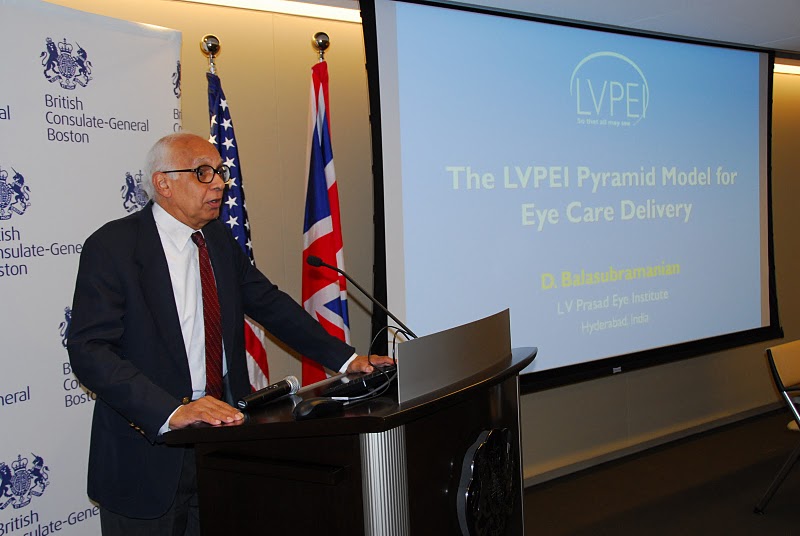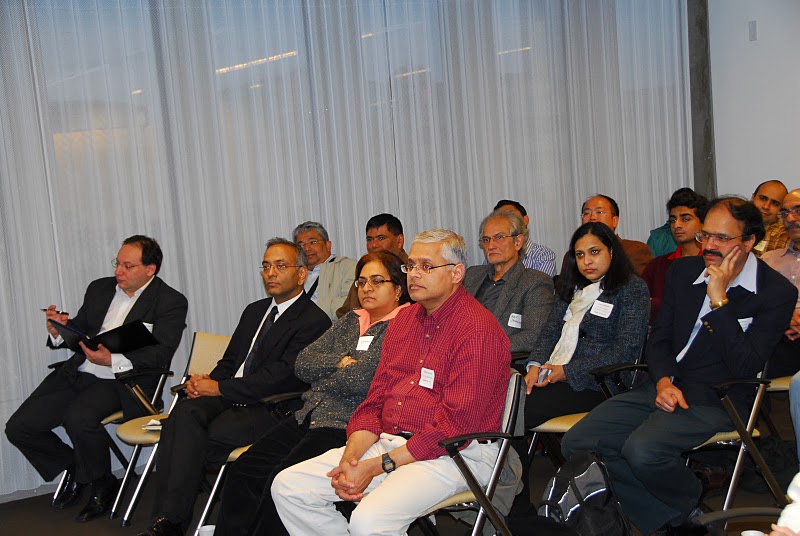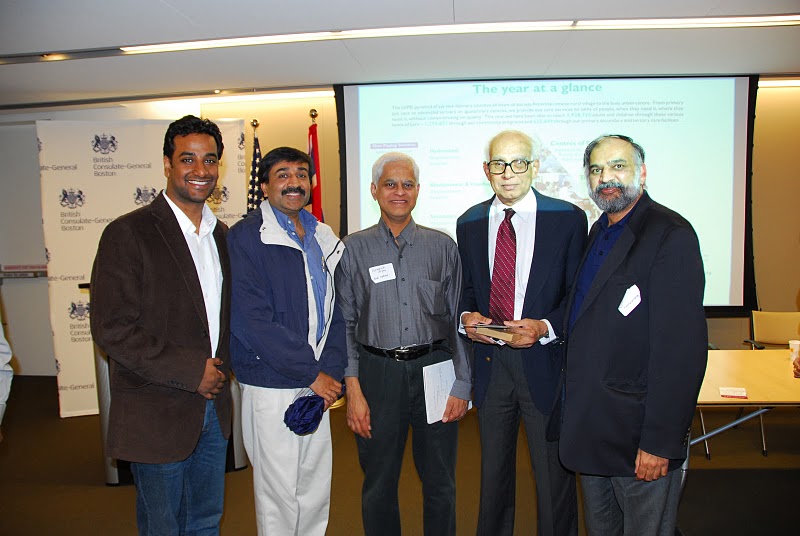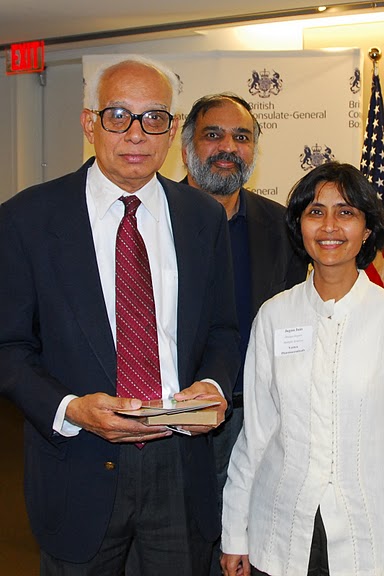Contribute
| Tackling The Blindness Crisis In India |
Divya Srinivasan
05/13/2010
“It is the fashion for young boys to wear glasses because Harry Potter wears it,†said Dr. D. Balasubramanian only half jokingly. Representing the L.V. Prasad Eye Institute (LVPEI), Dr. Balasubramanian spoke at the UK Trade and Investment Office in Boston on Monday, April 26 , 2010.
Dr. Balasubramanian, is an esteemed physician who has been recognized on many an occasion for his commitment to bettering society. He was awarded the Padma Shri and was similarly recognized in France with the Chevalier de l’Ordre National de Merite because of his work in bringing affordable eye care to underserved communities both in India and internationally. Dr. Balasubramanian is currently serving as the Research Director of LVPEI.
Speaking in front of a group of about 30 NRIs, Dr. Balasubramanian described the blindness crisis that has plagued India and presented the model used by LVPEI to tackle the present situation. The blindness situation in India is dire and unnecessary. According to a recent study, 60% of the people in India suffer from cataract problems and 10% of the Indian population is blind simply because they lack prescription lenses. These numbers go to show that 1.2 million people in India could be cured of their “blindness†if only they had access to glasses.
The problem stems mainly from a systems loss. The majority of the 18000 eye doctors in India reside in the city. This excludes over 9 million patients who live in villages and lack both financial capacity and geographical access to healthcare. However, Dr. Balasubramanian also cited four overarching themes that must be examined by those interested in solving the blindness crisis: Availability of care, Affordability of care, Accessibility to care, and Acceptability of receiving care.
LVPEI has adopted a pyramid structure for addressing this multi-faceted problem. There are 5 levels of coverage. The most grass-roots level is the “Vision Guardian,†whose responsibility is to “keep an eye†on the eye health of a community of about 5, 000 people. These vision guardians are volunteers from the local community and are not paid for their duties. As part of their role, the vision guardians must prescribe near vision glasses, provide appropriate referrals to higher levels of care, conduct post-operative surveillance, and supply “Eye Care Insurance†that is sponsored by LVPEI. According to Dr. Balasubramanian, 8 to 9 families out of 500 people generally subscribe to this insurance.
The next level above the Vision Guardian is the “Vision Centre.†The vision centre caters to a population of 50,000 residents. These vision centres are generally a small 10x12 room, in which patients can come to get basic diagnosis/procedures. All of these protocols are free except for the acquisition of glasses, which must be bought from the local man/woman managing the vision centre.
The level above the Vision Centre step of the pyramid, is the “Service Centre,†which serves a population of 500,000. Service centres are equipped with the facilities to perform cataract surgeries and other protocols for free. About 80-100 people come to these centres per day and of these, 10 people receive surgeries. Those who are able to pay can pay a small price for the surgery and receive some benefits—about 40% of the patients who come to these centres opt for the surgery with cost.
The most unique component of the Service Centres are that they are comprised of students who have been trained by vision technician courses offered by LVPEI and partnering universities. Those students who are trained for a year can work in the village setting; if they’ve been trained for 2 years they can set up a clinic in the city. For those who have been trained 3 or 4 years, they can work in hospitals and conduct research.
Above the service centres, there are “tertiary care centres†and “centres of excellence.†These levels are concentrated on providing a comprehensive range of healthcare services and training in the cities.
To date, LVPEI has 50 vision centres in Andhra Pradesh and is hoping to expand more with the help of external agencies. One of the many interested outside organizations is the Church of the Latter Day Saints, who has provided generous monetary funding to further this cause.
Dr. Balasubramanian’s talk provided a forum for understanding how to effectively deliver cost-effective services to those who need it most. His unwavering devotion to relieving the poor of blindness will no doubt serve as a guiding light in effecting positive healthcare growth around the world.
You may also access this article through our web-site http://www.lokvani.com/



